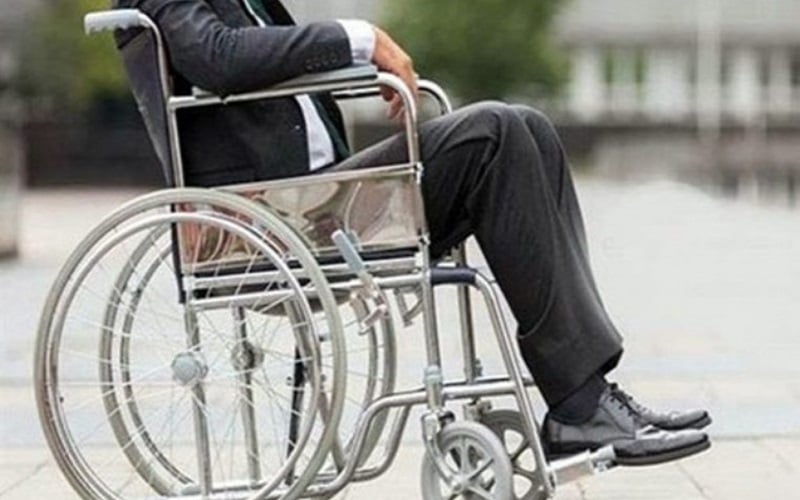Disability Rates in Iran Soar to 11.5%: Experts Call for Urgent Policy Reforms and Infrastructure Upgrades
The recent announcement from Iran’s Welfare Organization reveals a significant increase in the national disability rate, which has raised concerns about public health and social care in the country. According to Javad Hosseini, the head of the organization, the latest National Disability Epidemiology Survey indicates that approximately 11.5% of Iran’s population—around 9.5 million individuals—are living with some form of disability as of 2024.
This dramatic rise in disability rates marks a critical turning point in Iran’s healthcare landscape, necessitating urgent attention and action from policymakers and healthcare professionals alike.
A Sharp Statistical Leap
During a meeting of the Gonabad County Administrative Council on March 29, Hosseini shared the survey’s findings, which were derived from data collected from 297,000 households within the welfare target community. This data shows a stark increase compared to previous years. In 2011, the reported disability rate stood at a mere 1.3%. Experts now believe this figure was vastly underestimated due to outdated methodologies and standards.
The 2011 census recorded only 970,000 individuals with disabilities in a population of 75 million. Experts attribute this low number to poorly designed questionnaires and inadequate compliance with international standards, particularly those set by the World Health Organization (WHO).
Understanding the Types and Causes of Disability
The new survey, which follows the WHO’s framework for disability identification, captures a wider array of conditions, including:
- Physical-motor disabilities: 6.6%
- Visual impairments: 3.6%
- Hearing impairments: 1.8%
- Mental-cognitive disorders: 1.8%
- Speech and voice disorders: 0.8%
Hosseini emphasized that there are currently 3,100 rehabilitation and training centers across Iran providing services in 13 specialized areas. However, with the rising demand, these centers struggle to keep pace, particularly in addressing complex conditions like autism.
Autism on the Rise
Among the various disabilities, autism spectrum disorder (ASD) presents some of the most significant challenges. Hosseini described the care of autistic children as “the most difficult” compared to other disabilities. He underscored the urgent need to expand specialized schools for children with autism as a national priority.
According to the Iranian Autism Association, at least 1 in every 100 births in the country results in a child diagnosed with ASD. Data from global sources indicates that the number of individuals with autism in Iran surged from 170,000 in 1990 to 234,000 in 2019, and experts believe this trend continues to escalate.
Road Accidents and Population Policies: Key Drivers
In addition to congenital and neurological disorders, external factors such as traffic accidents and an aging population significantly contribute to the rising disability rate. Each year, approximately 67,000 disabilities result from road incidents alone. Despite national awareness campaigns, traffic injuries remain prevalent due to:
- Substandard road design
- Poor vehicle safety standards
- Reckless driving behavior
During the Nowruz holidays in March 2025, police reports indicated that 505 people died and 12,000 were injured in traffic accidents within just 13 days, with around 100 individuals suffering permanent disabilities each day.
Additionally, the aging population continues to exert pressure on the healthcare system. Health officials warn that the country may face a crisis in elderly care within the next decade as the demand for long-term rehabilitation and support services outstrips current capacities.
The Controversial Elimination of Prenatal Screening
Another significant factor contributing to the rise in disability rates is the discontinuation of prenatal screening programs. Initially approved during the 12th government and implemented under the 13th, this policy change faced strong opposition from the Ministries of Health and Welfare.
In 2021, the Ministry of Health predicted that the cessation of prenatal screening would result in at least 70,000 annual births of children with genetic or congenital disabilities, including Down syndrome. Psychologists have reported increased anxiety among expectant mothers, making pregnancy a more stressful experience due to heightened uncertainty.
A Call for Data-Driven Policy
While Iran’s current disability rate remains slightly below the global average of 15%, the speed of its increase has alarmed both policymakers and healthcare experts. Many warn that without reliable data and strategic planning, Iran’s healthcare system will fall short in meeting the growing demand for disability services.
Experts stress the urgent need for:
- Regular, accurate statistical surveys to capture the true scope of disabilities.
- Public education campaigns to raise awareness about conditions like autism, hearing loss, and vision impairment.
- Policy reforms that align with international standards and respond to demographic changes.
- Reevaluation of population policies, particularly those related to prenatal screening and care for the elderly.
Conclusion
The surge in Iran’s disability rate is not merely a statistical anomaly; it reflects systemic gaps in healthcare, infrastructure, and policymaking. With millions of Iranians now living with disabilities, the government faces a critical challenge. The question remains: Will it rise to meet this challenge with targeted investments and evidence-based policies, or will the crisis deepen further?






